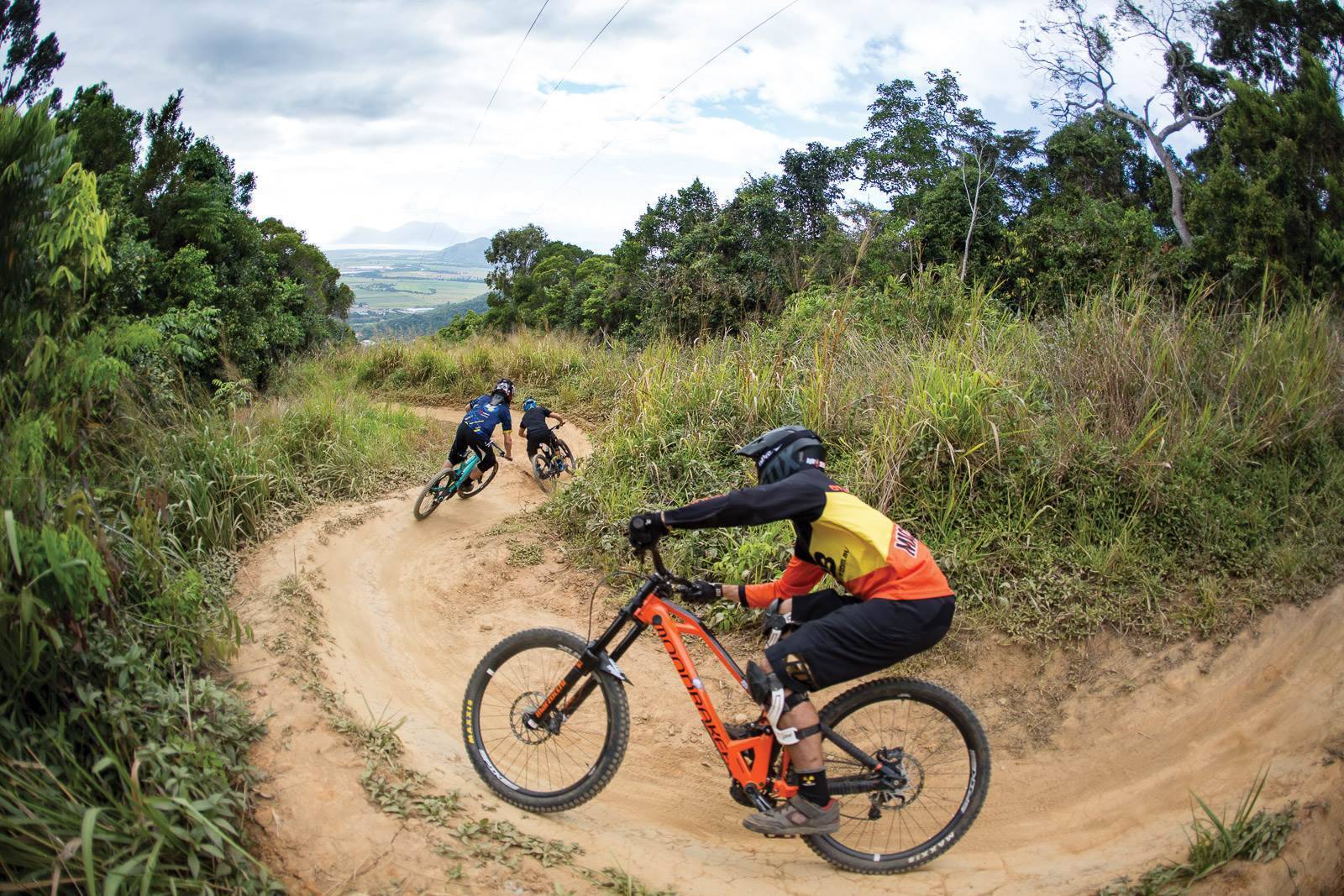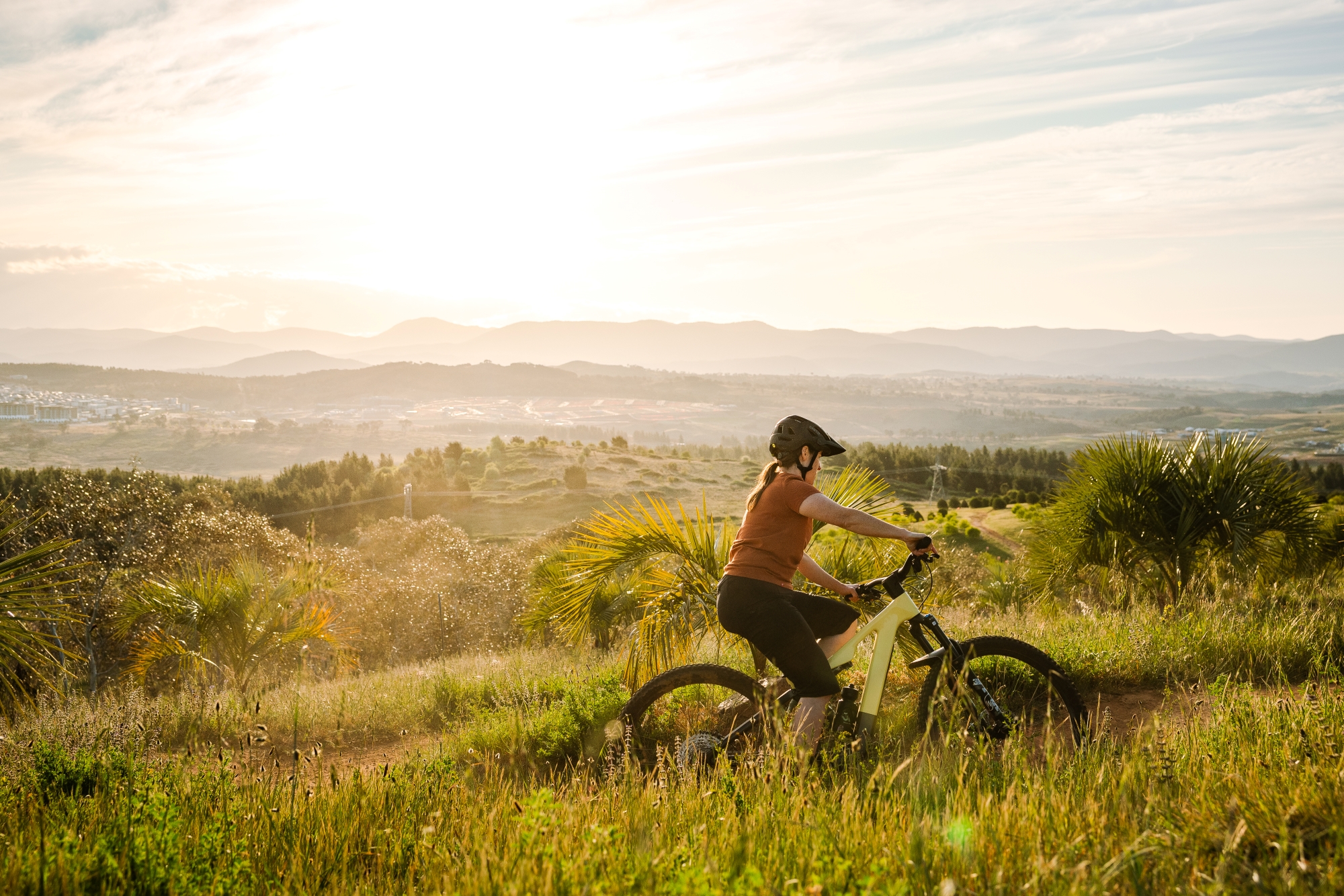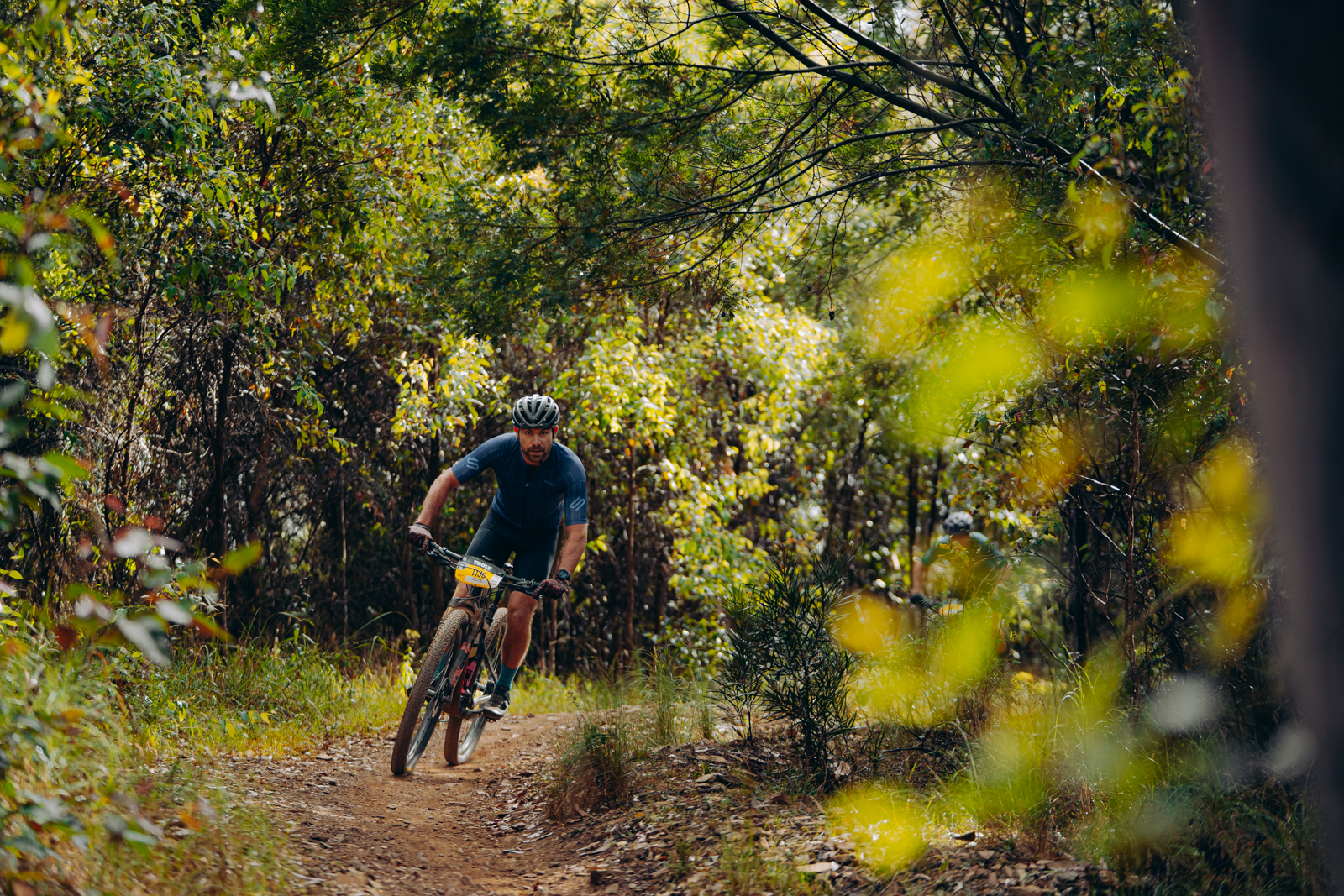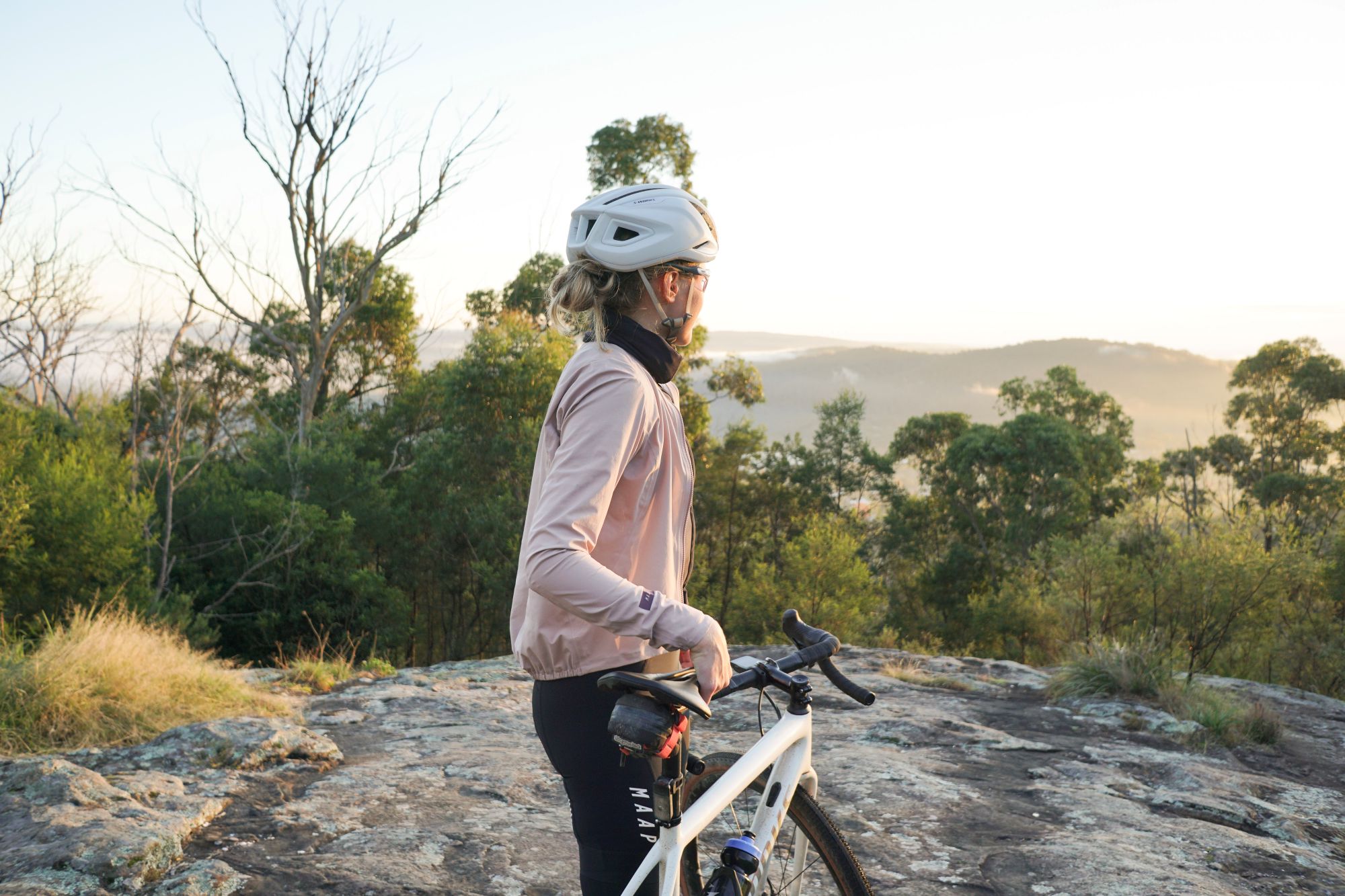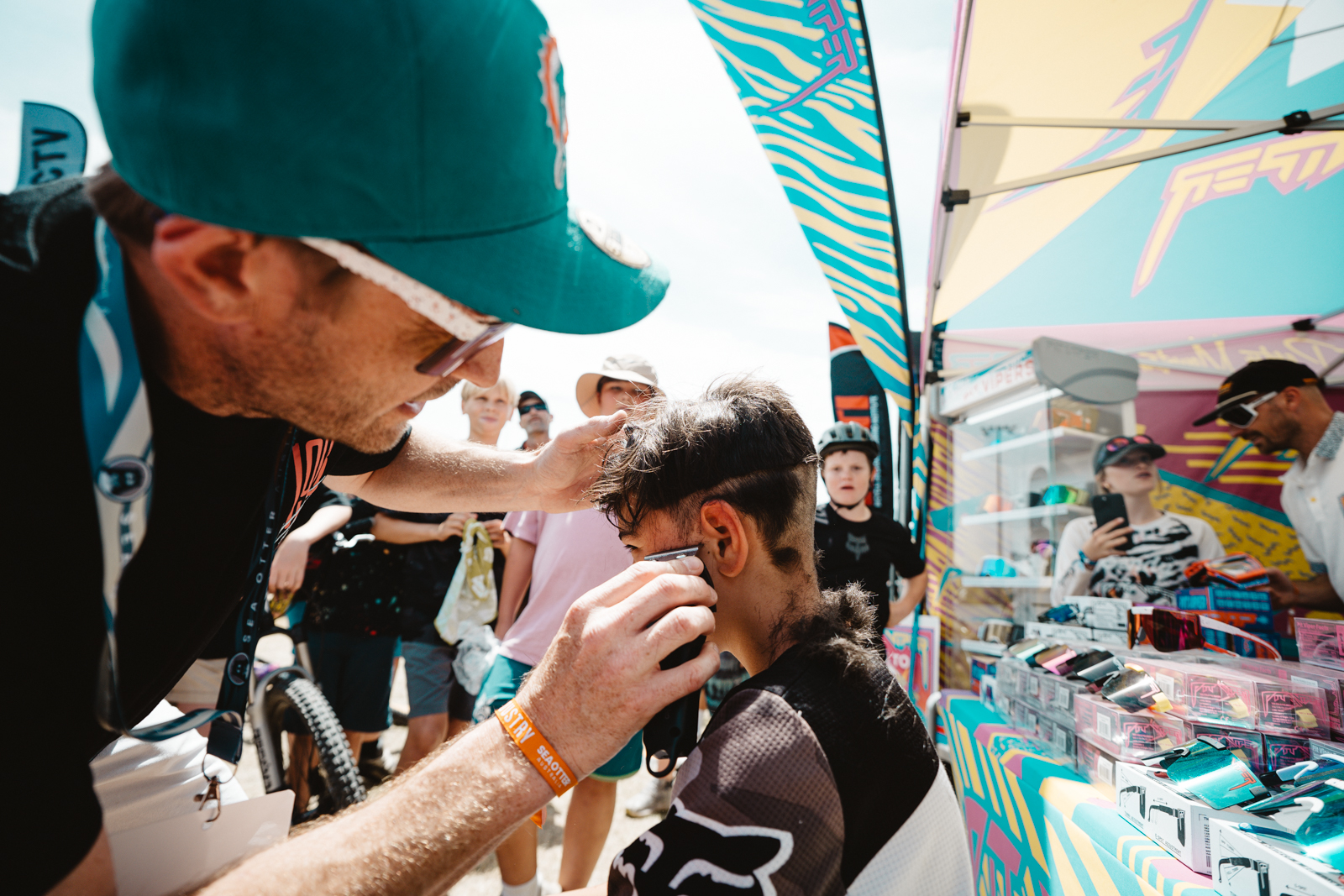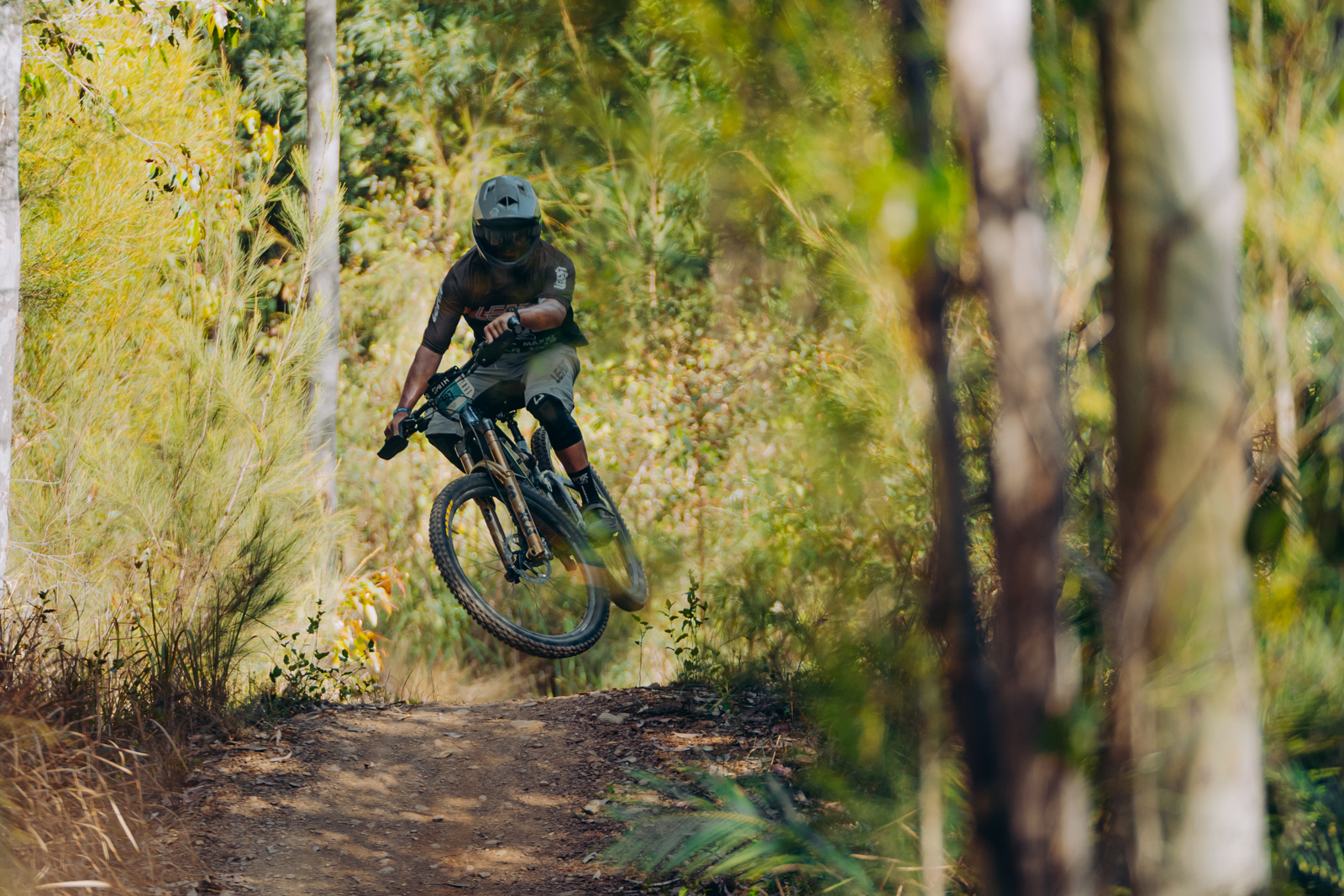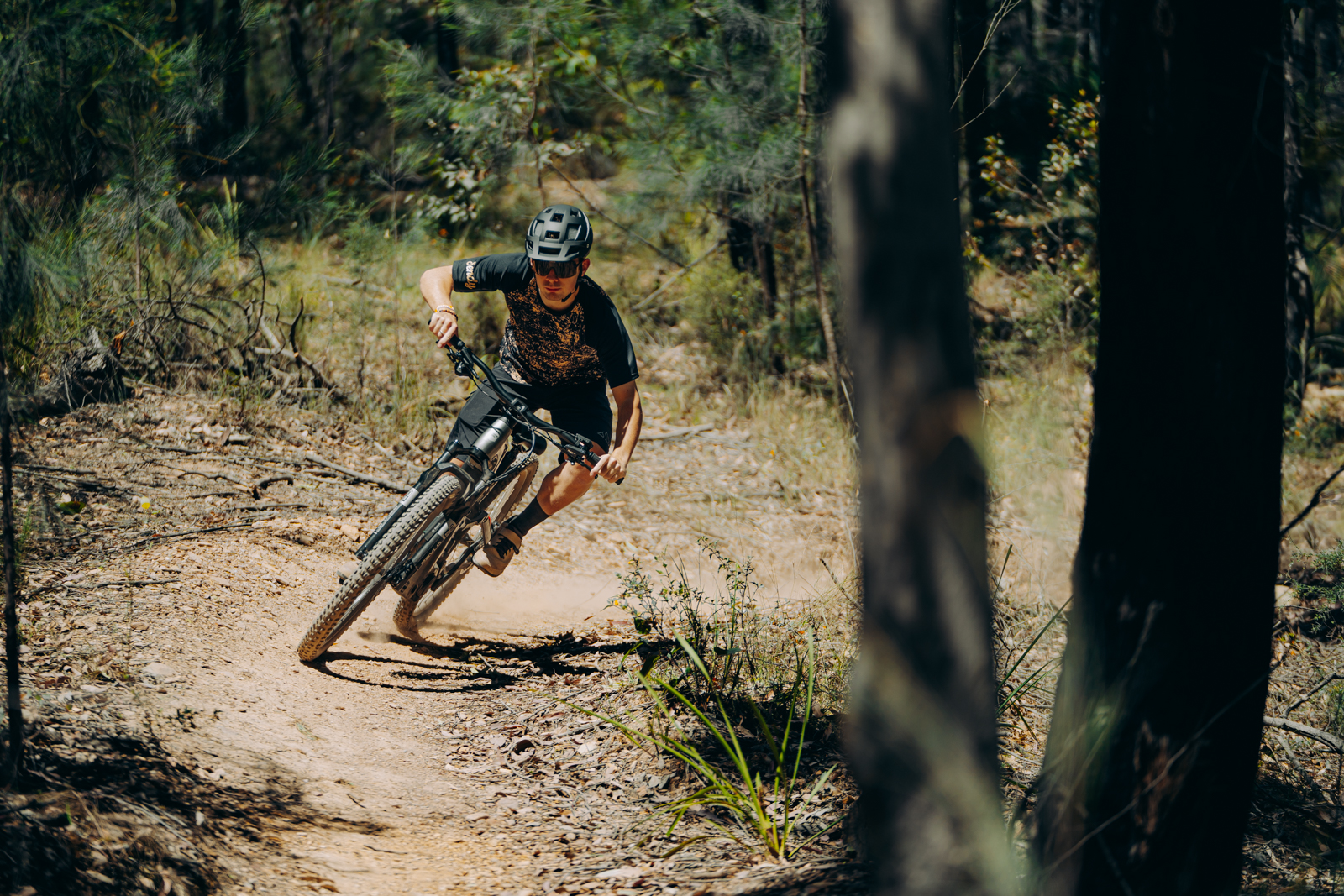Kuranda: King of the range
How can one ribbon of dirt in the forest create so much impact, and last so long?
Cairns, and Tropical North Queensland, have been in the mountain bike spotlight for years. So much has changed since the Mud Cows videos spawned a cult following in the 90s, but a few things have remained the same. Namely, the Kuranda downhill and Glen Jacobs.
In 1990, mountain biking was a different sport. The equipment was rudimentary and often experimental, trails were what you could find. But everything was changing. Everything was new. In a setting like Cairns, which is flanked by the Great Dividing Range, the terrain shaped mountain biking.
“Every afternoon we’d get our bikes and we’d push up a hill, we didn’t know there was a thing called cross country, we just thought mountain biking was downhill. You’d just push your bikes up and ride downhill,” says Glen Jacobs as we catch up after the highly succesful 2017 Mountain Bike World Championships. This was the second time the World Championships had come to the area – and trails like the Kuranda downhill are easily one of the foundation pieces that set the first Championship plan in action.
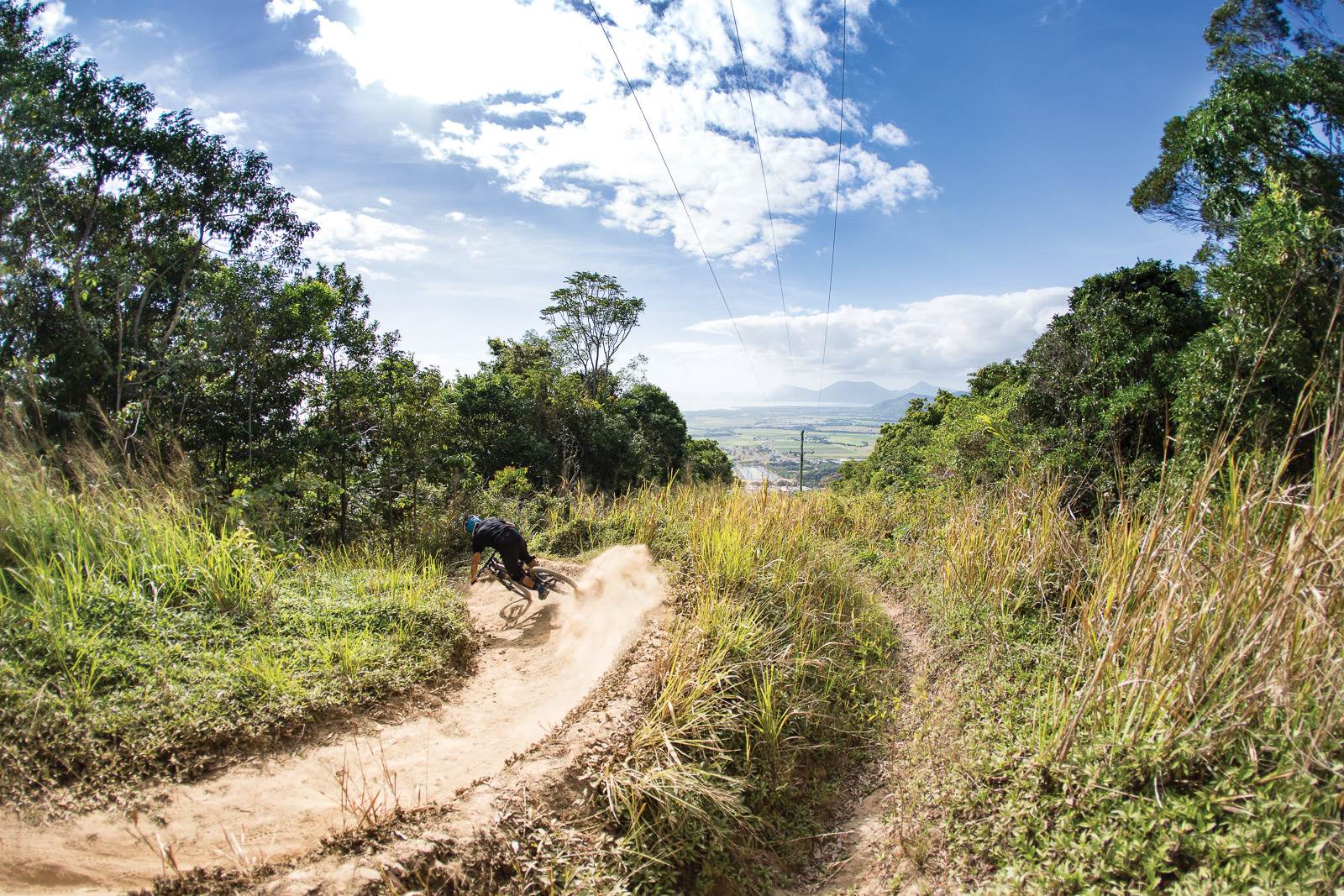
“All those mountains there near the airport, we’d push to the top of them and ride down, and we did that for months, and then we’ve gone… imagine that you could drive to the top of that hill? You could drive there, and then you could actually ride down. We got to thinking, I wonder where there’s a place like that?”
There are only a few ways up the range, so it was inevitable that the focus would fall on Kuranda.
“I remember going up a track which was the Old Kuranda Road in a motorbike race many years before. It was all overgrown and everything and I said ‘I think I know where there’s a track that goes up near the lookout, so we drove to the lookout,” explains Jacobs. If you have ever driven up the Kuranda Road then you’ll know of the lookout. It commands an uninterrupted view across Cairns and south to Walshs Pyramind.
“I was with a bloke called Peter Blakey – and he and I got to the top, and we looked over the edge and it was just grasses over our heads and he said ‘there’s nothing going down there, you can have that’ and off he went.”
Mountain biking needs pioneers and it’s clear that Jacobs required a little bit of pioneering spirit at this point.
“I said ‘I’m right, I’ll just walk’, and I got lost, and I did that for a couple of weekends until another bloke came and helped me.” Daniel Pradow was on hand to help. Pradow worked in a couple of shops in town. “He said ‘We’ve gotta find this thing. It’ll be great for us.’ And we did. We found the exit.”
“And we just started clearing it, and that was the start of Kuranda. That would have been 1990. Probably the first couple of months in 1990. And we started shuttling: up and down and up and down, and we didn’t ride anything else then.”
“Within six months we’d held two races on it, and started looking for other ones.” Cairns isn’t short of a hill, and the road to Lake Morris and Copperlode was quickly explored. “On Copperlode, we found a trail, and all these other ones that came off the track, we cut them open and within a year and a half I think we had 14 downhills in the area.”
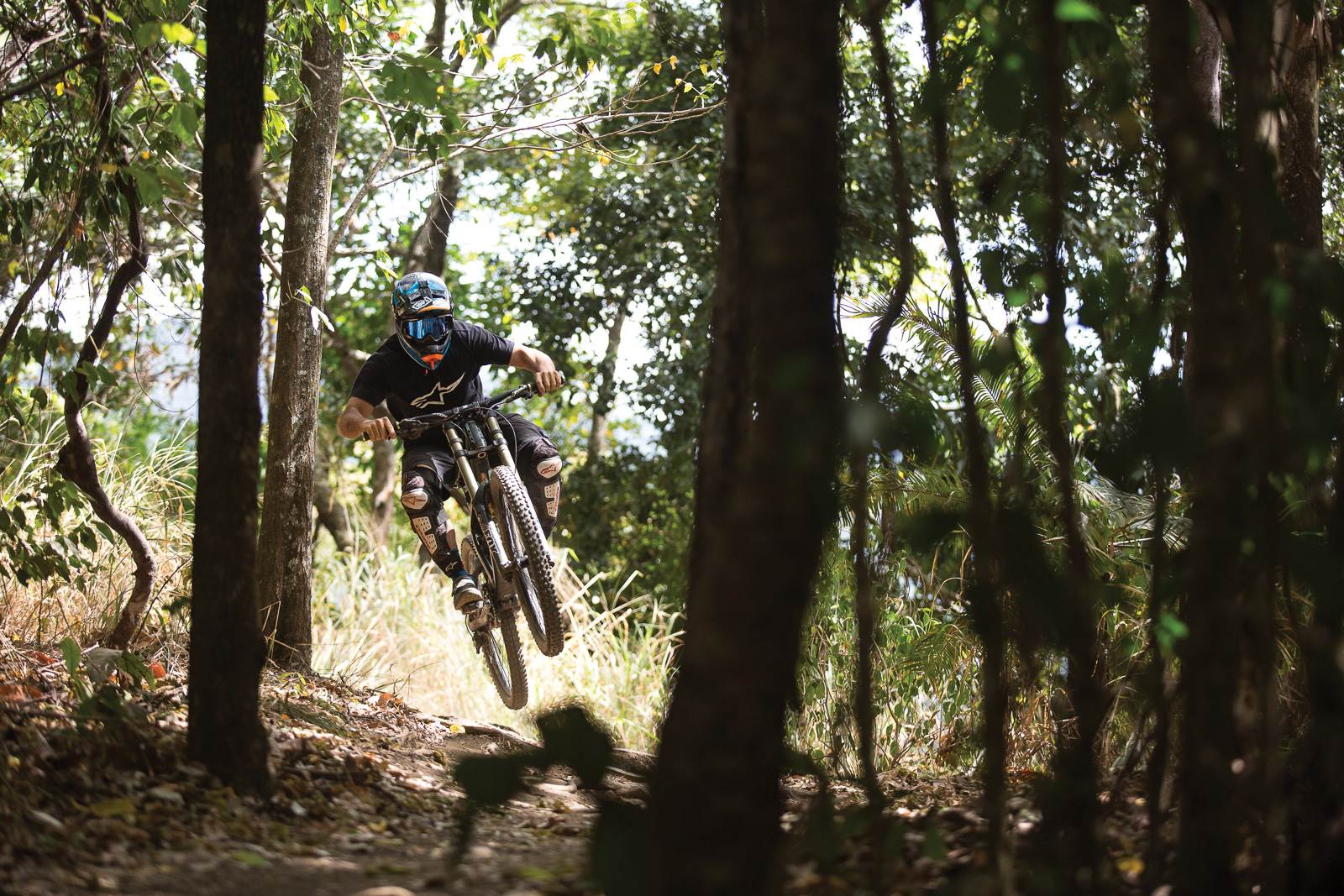
The saying “ride what you build” is often bandied around, and that’s something that still rings true up north. It’s no surprise that Jacobs now heads up one of the pre-eminent trail building companies in Australia. He and many others have been doing it for decades.
“so many more people have a go at putting extra tracks in and things like that, and that’s part of the culture, you know?” There are tools beside the trail at Kuranda, constantly on hand for any trail maintenance. Even when we rode the trail for the images in this feature, the riders stopped to fix up some sections. Kuranda is special, it was the first trail and it gets treated differently
“Kuranda is very special to us,” confirms Glen, “and it’s very special to me too, because you know, it was something that we were looking for and we found it, and it’s still there.”
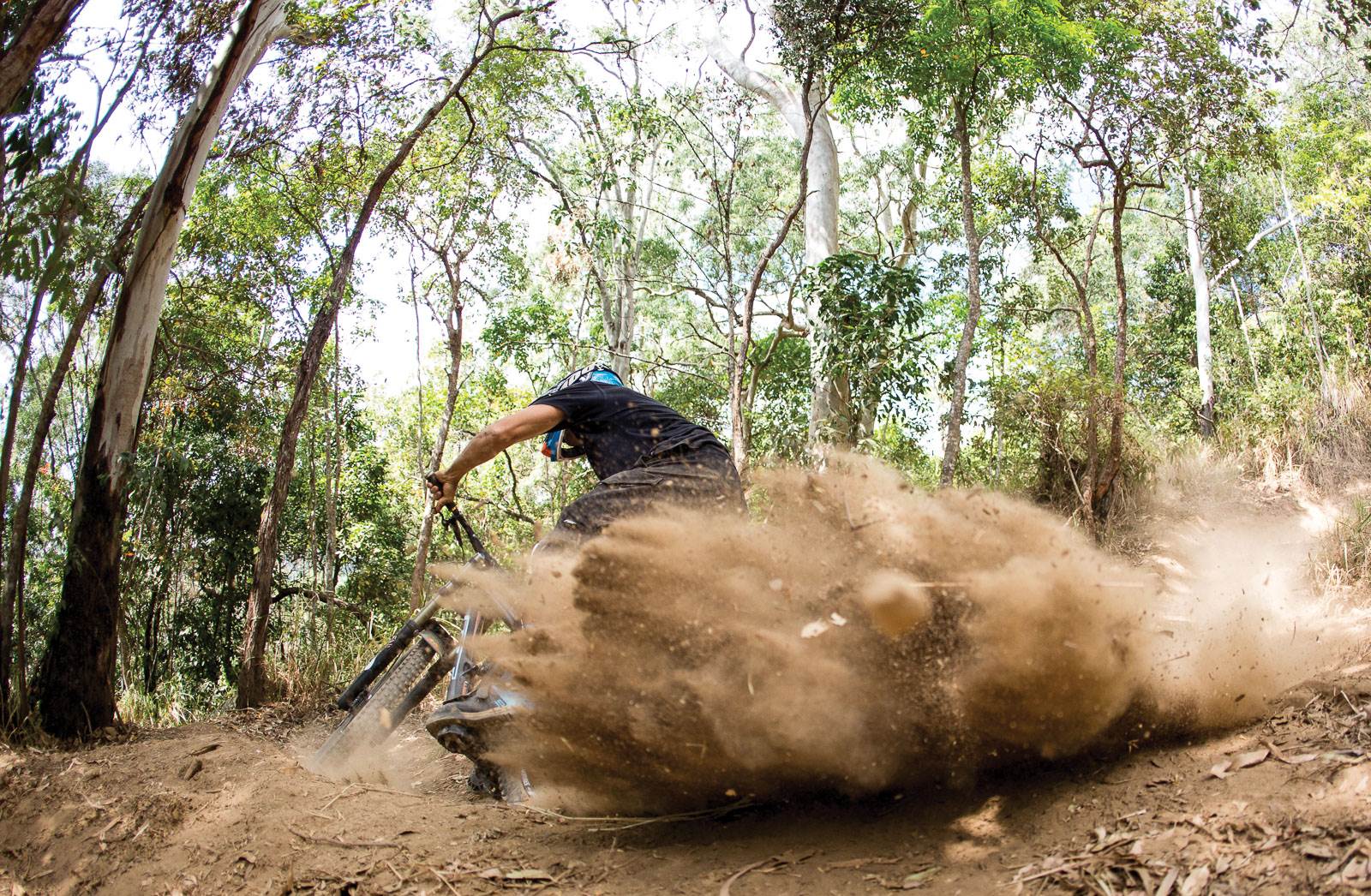
How many runs can you do of Kuranda?
Mick Hannah holds the record, and he confirmed how it came about after the World Championships in 2017.
“It was 41 runs, actually. We started at 7:30 in the morning and rode until 6:30 at night. We had lunch packed in the car so we didn’t have to stop. The reason it came to 41 is because at the beginning, or what started that day is I’d done 25, and my friend Miles Mead had done 21, so we decided we needed to put the record a bit out of reach. My goal was to do 30 that day, we ended up doing 40. There was another guy with us, Shane Harding, and he got a flat in the middle of the day and we left him. So he’d done 39, I’d done 40 and we couldn’t let him stop at 39.” And so the record stands – 41 runs of the Kuranda downhill in one day
Kuranda’s roll in developing mountain biking
The early 1990s was a formative time for mountain biking and with a downhill trail with easy shuttle access, things were ready to take off.
“That was the ignitor,” Jacobs confirms. And to think then in 2017, riders like Danny Hart were using the Kuranda downhill for training ahead of the World Championships. One trail has seen millions of runs, from countless riders, and so many stars of the sport. I have to ask Jacobs, now that mountain biking is much bigger can we still see one trail sparking such a change?
“It happens in little spot fires here and there around the country, it does happen, but I don’t think there’s a track that has lasted that long and has that much effect – there’s a lot to it – as you said with the World Cups and the World Champs, people riding on it and training and practicing, and shuttle companies using it. It’s got some depth of character. Kuranda is 27 years old now, coming up to 28, so I don’t think there’s anything like that in Australia and that’s what we’re really proud of. It did really set the scene because we knew nothing about mountain biking, we just rode bikes. We didn’t even know there was a club.” And that was the next step for growth. Having a club. But it came around by chance, according to Jacobs.
“There was a club in Cairns called ‘Beating Around the Bush Bicycle Club’. They were a mountain bike club and there were six people in the club. The president of that club came out to see us at the bottom of the hill one day after we ran our first race, which was 22 people, and it was AJ Hackett, and a couple of New Zealanders, it was a great little race.”
“She came out and said ‘what you’re doing is illegal. You shouldn’t be doing this. You have to be in a club’ and I go ‘What, we’re just riding bikes?’”
The group were then told that they would have to join the club if they were going to ride mountain bikes. With the AGM the next week, about 25 of them went along.
“There were only six of them in that club, and they were putting up for President, and unbeknownst to me, one of my mates put my name in. I went ‘Hang on, no. I don’t want to be President of a club’, but then all of a sudden I was President of the Cairns Mountain Bike Club. Well, we changed the name to Cairns Mountain Bike Club straight
n 1990, mountain biking was a different sport. The equipment was rudimentary and often experimental, trails were what you could find. But everything was changing. Everything was new. In a setting like Cairns, which is flanked by the Great Dividing Range, the terrain shaped mountain biking.
“Every afternoon we’d get our bikes and we’d push up a hill, we didn’t know there was a thing called cross country, we just thought mountain biking was downhill. You’d just push your bikes up and ride downhill,” says Glen Jacobs as we catch up after the highly succesful 2017 Mountain Bike World Championships. This was the second time the World Championships had come to the area – and trails like the Kuranda downhill are easily one of the foundation pieces that set the first Championship plan in action.
“All those mountains there near the airport, we’d push to the top of them and ride down, and we did that for months, and then we’ve gone… imagine that you could drive to the top of that hill? You could drive there, and then you could actually ride down. We got to thinking, I wonder where there’s a place like that?”
There are only a few ways up the range, so it was inevitable that the focus would fall on Kuranda.
“I remember going up a track which was the Old Kuranda Road in a motorbike race many years before. It was all overgrown and everything and I said ‘I think I know where there’s a track that goes up near the lookout, so we drove to the lookout,” explains Jacobs. If you have ever driven up the Kuranda Road then you’ll know of the lookout. It commands an uninterrupted view across Cairns and south to Walshs Pyramind.
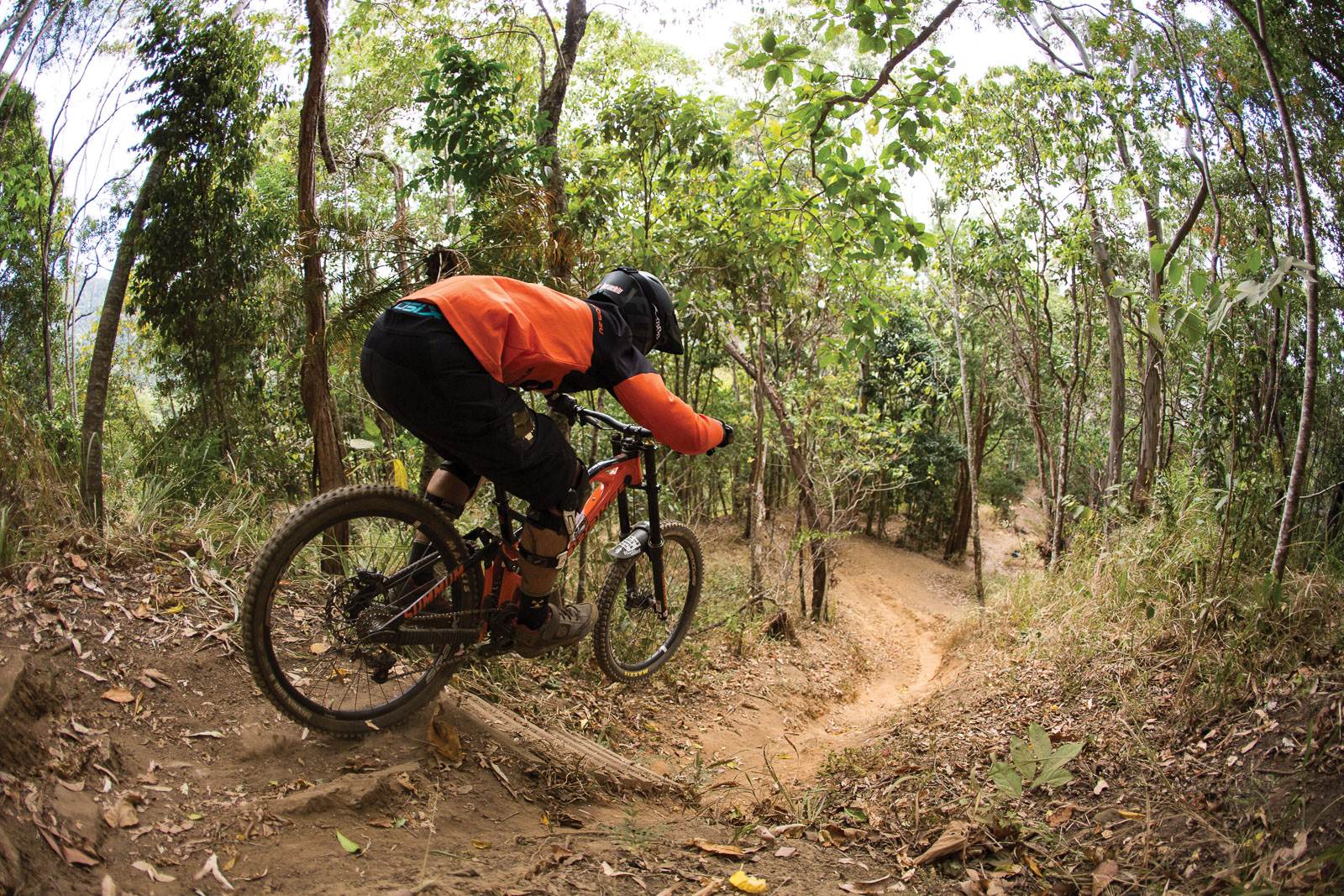
“I was with a bloke called Peter Blakey – and he and I got to the top, and we looked over the edge and it was just grasses over our heads and he said ‘there’s nothing going down there, you can have that’ and off he went.”
Mountain biking needs pioneers and it’s clear that Jacobs required a little bit of pioneering spirit at this point.
“I said ‘I’m right, I’ll just walk’, and I got lost, and I did that for a couple of weekends until another bloke came and helped me.” Daniel Pradow was on hand to help. Pradow worked in a couple of shops in town. “He said ‘We’ve gotta find this thing. It’ll be great for us.’ And we did. We found the exit.”
“And we just started clearing it, and that was the start of Kuranda. That would have been 1990. Probably the first couple of months in 1990. And we started shuttling: up and down and up and down, and we didn’t ride anything else then.”
“Within six months we’d held two races on it, and started looking for other ones.” Cairns isn’t short of a hill, and the road to Lake Morris and Copperlode was quickly explored. “On Copperlode, we found a trail, and all these other ones that came off the track, we cut them open and within a year and a half I think we had 14 downhills in the area.”
The saying “ride what you build” is often bandied around, and that’s something that still rings true up north. It’s no surprise that Jacobs now heads up one of the pre-eminent trail building companies in Australia. He and many others have been doing it for decades.
“so many more people have a go at putting extra tracks in and things like that, and that’s part of the culture, you know?” There are tools beside the trail at Kuranda, constantly on hand for any trail maintenance. Even when we rode the trail for the images in this feature, the riders stopped to fix up some sections. Kuranda is special, it was the first trail and it gets treated differently.
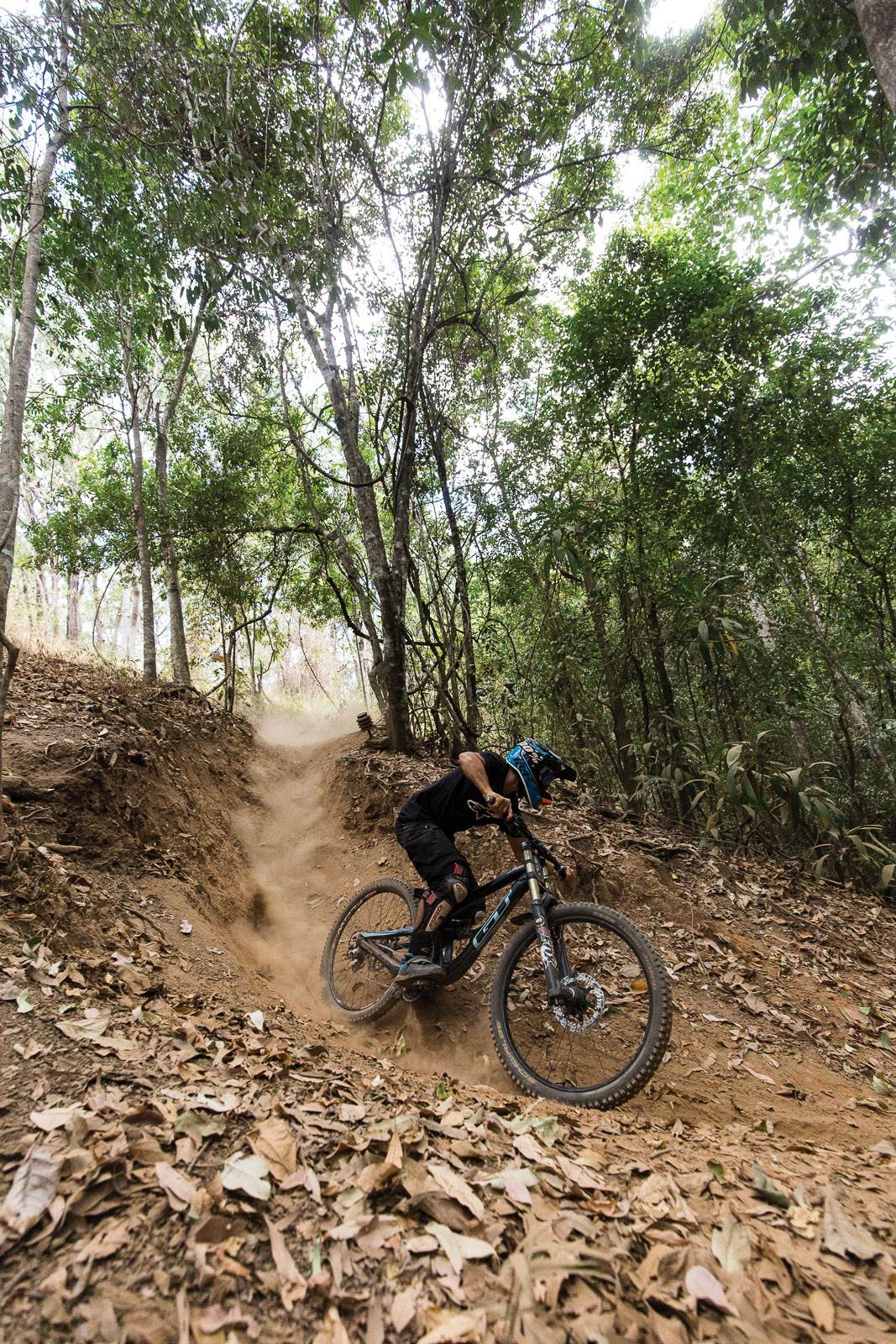
“Kuranda is very special to us,” confirms Glen, “and it’s very special to me too, because you know, it was something that we were looking for and we found it, and it’s still there.”
The early 1990s was a formative time for mountain biking and with a downhill trail with easy shuttle access, things were ready to take off.
“That was the ignitor,” Jacobs confirms. And to think then in 2017, riders like Danny Hart were using the Kuranda downhill for training ahead of the World Championships. One trail has seen millions of runs, from countless riders, and so many stars of the sport. I have to ask Jacobs, now that mountain biking is much bigger can we still see one trail sparking such a change?
“It happens in little spot fires here and there around the country, it does happen, but I don’t think there’s a track that has lasted that long and has that much effect – there’s a lot to it – as you said with the World Cups and the World Champs, people riding on it and training and practicing, and shuttle companies using it. It’s got some depth of character. Kuranda is 27 years old now, coming up to 28, so I don’t think there’s anything like that in Australia and that’s what we’re really proud of. It did really set the scene because we knew nothing about mountain biking, we just rode bikes. We didn’t even know there was a club.” And that was the next step for growth. Having a club. But it came around by chance, according to Jacobs.
“There was a club in Cairns called ‘Beating Around the Bush Bicycle Club’. They were a mountain bike club and there were six people in the club. The president of that club came out to see us at the bottom of the hill one day after we ran our first race, which was 22 people, and it was AJ Hackett, and a couple of New Zealanders, it was a great little race.”
“She came out and said ‘what you’re doing is illegal. You shouldn’t be doing this. You have to be in a club’ and I go ‘What, we’re just riding bikes?’”
The group were then told that they would have to join the club if they were going to ride mountain bikes. With the AGM the next week, about 25 of them went along.
“There were only six of them in that club, and they were putting up for President, and unbeknownst to me, one of my mates put my name in. I went ‘Hang on, no. I don’t want to be President of a club’, but then all of a sudden I was President of the Cairns Mountain Bike Club. Well, we changed the name to Cairns Mountain Bike Club straight away. And that’s sort of where it started.”
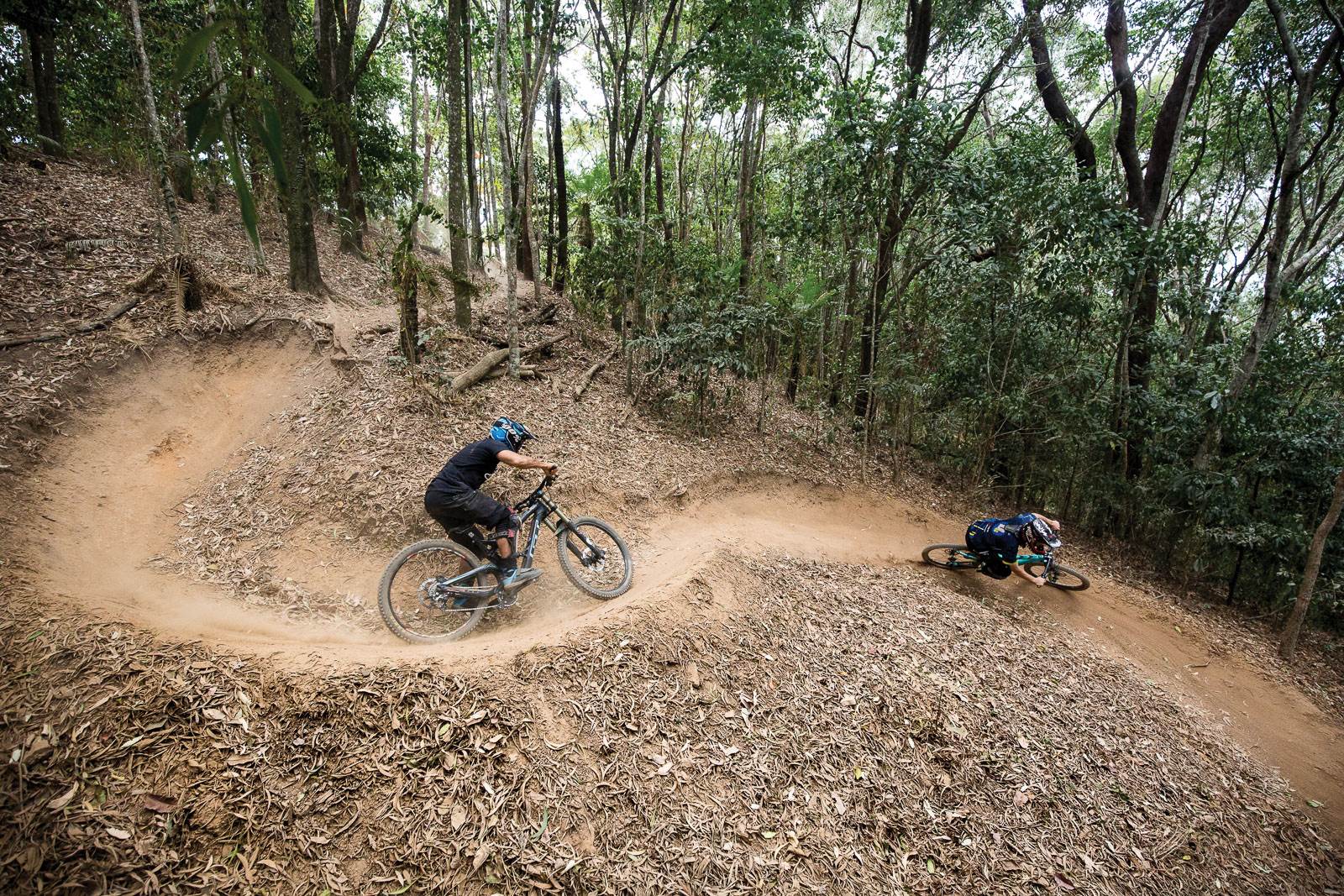
And well, we know the rest right? Mountain biking grew in the area, they attracted a World Cup and World Championships in the mid 90s, and then two World Cups and a World Championship again in 2014, 2015 and 2017 respectively.
There’s areas there that look like you’re walking on the edge of the Grand Canyon, looking down onto the reef, the ocean and the beaches, and it’s beautiful.
“We didn’t have any aspirations to go big. We were just mountain bikers, we were just riding our bikes down this hill, but all these little stepping stones fell into place. And to think there were only six people in that club but there were 25 of us… So, you know, the time was right.”
So much has happenned in the region since these early days of mountain biking, but that’s not to say growth has stopped. Far from it. Since then the whole of Smithfield Mountain Bike Park has been built, there are trails up the range at Davies Creek and Mareeba, the RRR event was born and has blossomed, and now is part of a new 4-day stage race, plus of course the huge trail at Atherton on the Tablelands – mountain biking has been spreading through the whole region. But there’s a new trail being mapped out, with a plan that puts a twinkle in Glen Jacob’s eye.
“It goes from Palm Cove to Port Douglas, 72 kilometres long. For walkers that’s five days. We’ve designed overnight camping and glamping. It’s all happening. We’ve just delivered stage one, which is a concept plan.” So the plan is for a shared use trail, designed to reduce any complications with users who move at different speeds.
“There’s probably three or four times more mountain bikers than walkers. The trail goes past some really iconic waterfalls, swimming holes and beaches and cliffs and lookouts. It’s free. It’ll be probably free or you may need a permit, but basically, anyone can ride it, but if you want to stay at the glamping areas you’ll have to go with a tour company,” explains Jacobs. As mountain biking is growing, so are the options. Do you want high-end accommodation and meals prepared by chefs? There are options for that now.
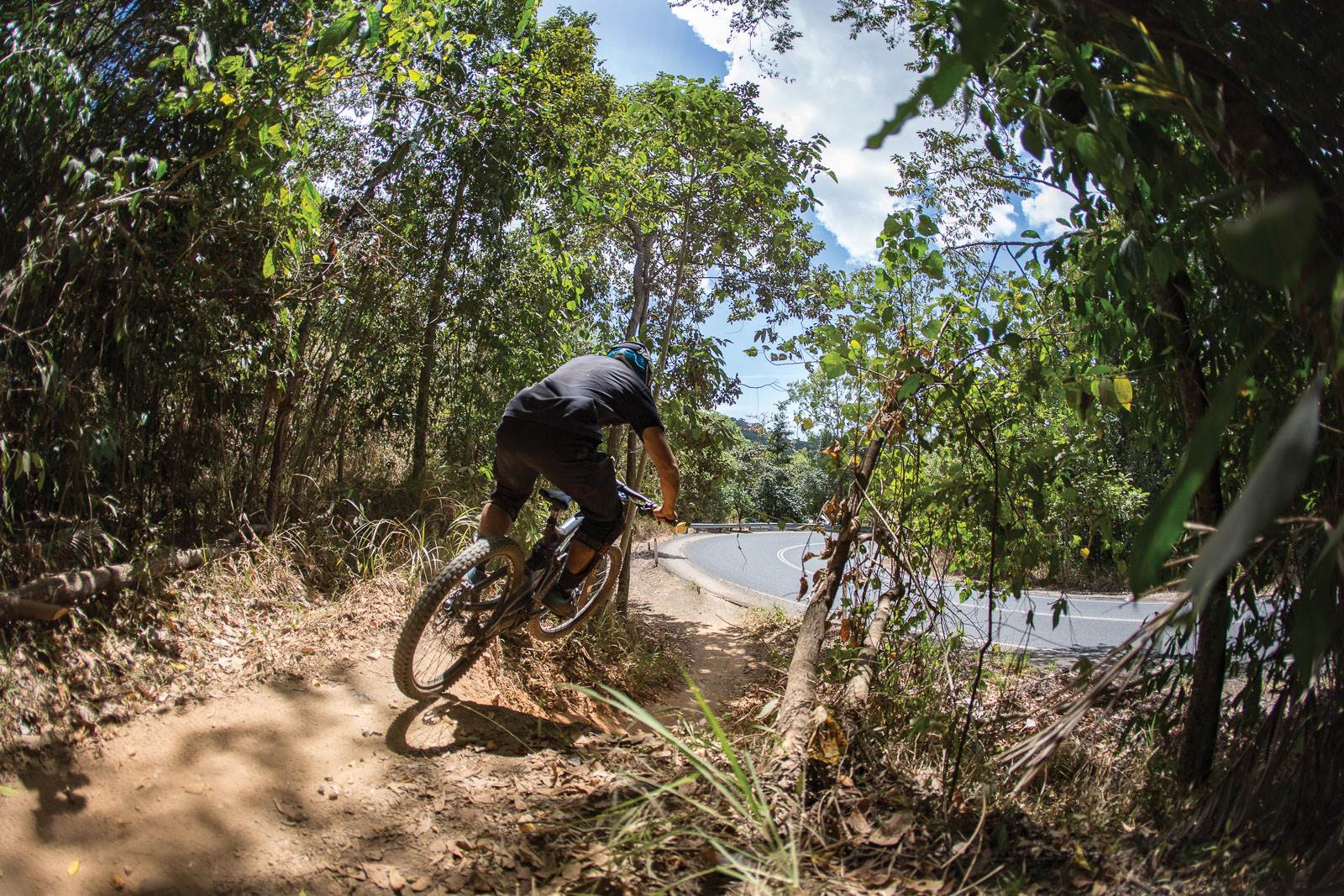
“It’s called Wangetti Trail at the moment but it’s probably going to be called – I hope – the Great Barrier Reef trail. There’s areas there that look like you’re walking on the edge of the Grand Canyon, looking down onto the reef, the ocean and the beaches, and it’s beautiful.”
Jacobs’ excitement is building as he talks further about this new project, something that will link communities, offer something for mountain bikers, locals and visitors alike.
“That will be the biggest project in Australia by far. Stage one out of three is complete. Stage two is about to start moving forward and that’s the master plan. That’s where we walk metre by metre on the ground. We’ll work out if we’re going left or right of that tree. Is it going to have 142 suspension bridges, or is it going to have 80 lookout chairs, shelters, things like that. This is the next stage. Then it’ll go out to tender, and anybody can win this tender, but we’re hoping we can do it because it’s our baby and it’s our dream,” Given Jacobs has grown up in the area, he’s clearly invested in the success of the trail, and building it with World Trail would be a big part of that.
“Stage two will happen in the next 12 months then after that, Stage three, which is the construction phase, maybe 18 months to two years to deliver, with enough skilled professionals, and we don’t want to do it piece by piece, we want to do the whole thing. It’s an adventure trail. There’s no hardcore descents or nasty things. It’s definitely ‘green’. This is a cross between an adventure and wilderness trail. We’ll try and make it as raw and natural as possible – of course, sustainable – but fun for people to ride.”
This will be completely different to the Kuranda downhill trail, but when we’re looking at what has chaged over a period that will be about 30 years once this new trail is open – that’s exactly what should be expected. But that one trail dropping in from the range, off the look out, is undeniably what started it all. Mountain biking will continue to grow and expand, and the Kuranda downhill trail will still be standing, evolving and helping riders progress.
Words: Mike Blewitt Photos: Dave Acree

